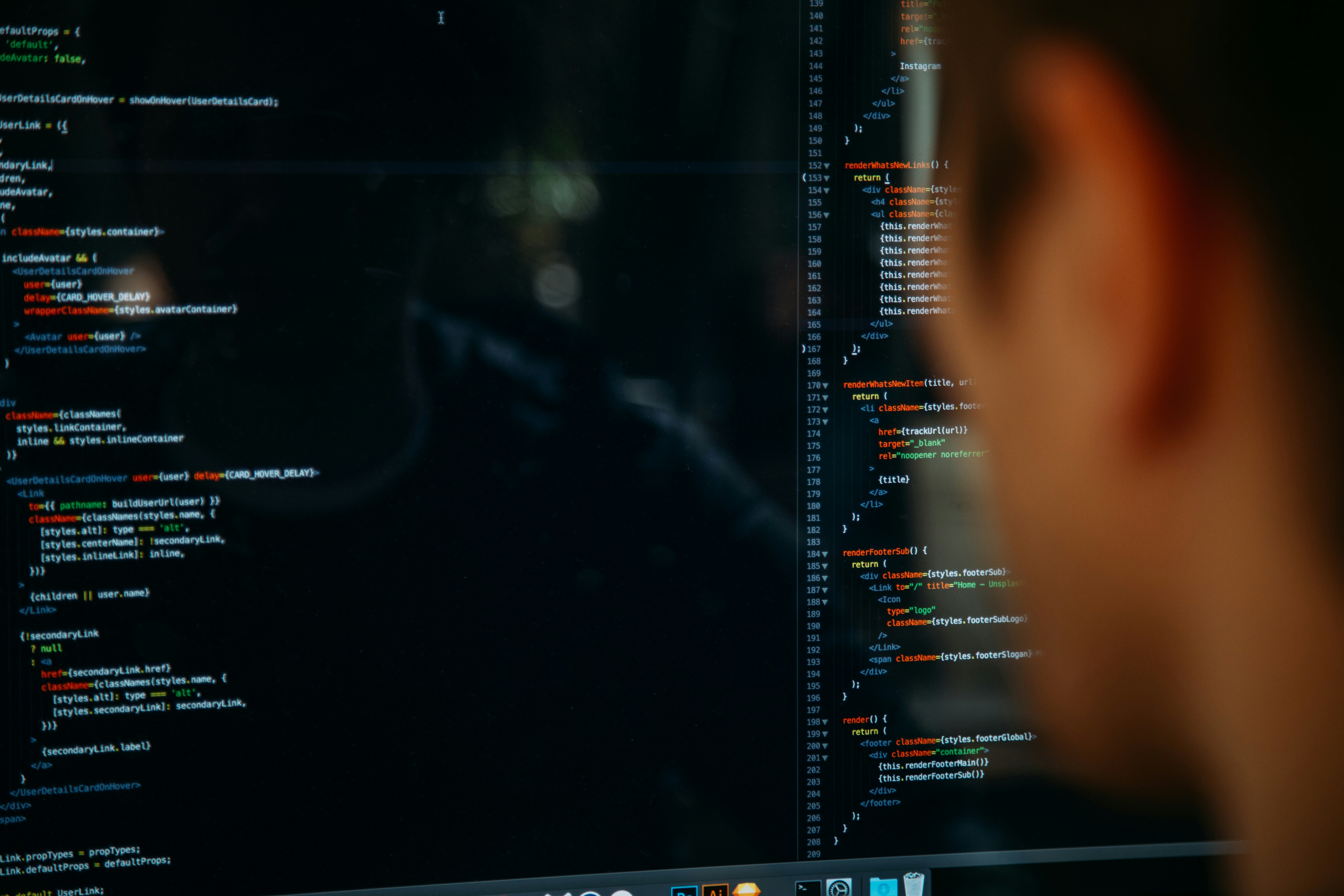Full-stack development refers to creating software applications that span both the front-end and back-end. A full-stack developer is a professional skilled in multiple programming languages and technologies, enabling them to build and maintain the entire structure of a web application. These developers are proficient in crafting dynamic user interfaces, designing databases, and managing server operations, making them highly versatile in the tech industry. The definition of a full-stack developer highlights their ability to handle all stages of application development. They manage everything from building visually engaging front-end designs to implementing efficient back-end logic and maintaining server infrastructure.
Understanding full-stack development meaning involves knowing its significance in modern software engineering. Full-stack developers bridge the gap between user experience and technical functionality by combining front-end and back-end expertise. Their ability to work across various layers of development makes them an invaluable resource for building efficient and cohesive applications.

What Do You Need to Know Before Becoming a Full-Stack Developer?
Full-stack development services embrace a multifaceted field that demands familiarity with numerous technologies. Before stepping into full-stack programming, aspiring developers should grasp the fundamental concepts of both front-end and back-end development. This involves learning to design user-friendly interfaces as well as understanding server logic and database management.
Choosing the right full-stack selection of tools and languages is equally important. Developers often use popular front-end technologies like HTML, CSS, and JavaScript alongside back-end frameworks such as Node.js or Python. Familiarity with database systems like MySQL or MongoDB is also necessary to create applications capable of handling data efficiently.
In addition to technical skills, problem-solving abilities, and creativity play a significant role. Full-stack developers frequently encounter challenges requiring innovative solutions, whether it's optimizing performance or resolving compatibility issues. Communication skills are also essential, as collaboration with other team members is a routine part of the job.
Starting your journey in full-stack programming involves a commitment to continuous learning, as technologies in this field are constantly evolving. Aspiring developers can establish a successful career in full-stack development with dedication and a passion for coding.
What Does a Full-Stack Developer Do?
A full-stack web developer plays a key role in creating software applications that deliver both functionality and an engaging user experience. These professionals oversee every layer of development, from front-end interfaces to back-end processes and database management. Their work involves building applications, troubleshooting issues, and collaborating with teams to deliver cohesive solutions.
Full-stack developers write front-end code in their day-to-day tasks using languages like HTML, CSS, and JavaScript to create interactive user interfaces. They also handle server-side programming using frameworks such as Node.js, Ruby on Rails, or Django. A full-stack development company often relies on these professionals to create efficient coordination between the various components of an application.
A full-stack engineer possesses a unique blend of skills that includes designing responsive layouts, integrating APIs, and optimizing database performance. Their responsibilities may also extend to maintaining application security and scalability. This versatility makes them indispensable in delivering complete software solutions.

Full-Stack Developer Skills:
- Frontend Technologies - HTML, CSS, JavaScript, and frameworks like React, Angular, or Vue.js.
- Backend Languages - Node.js, Python, Ruby, or Java for server-side development.
- Databases - Experience with relational (MySQL, PostgreSQL) and NoSQL (MongoDB) databases.
- Version Control - Proficient with Git for source code management.
- API Development - Creating and integrating RESTful and GraphQL APIs.
- Authentication & Security - Implementing authentication (OAuth, JWT) and secure coding practices.
- Responsive Design - Building mobile-friendly, accessible web apps.
- Testing & Debugging - Familiarity with tools like Jest, Mocha, and debugging techniques.
- Web Servers & Deployment - Knowledge of servers (Nginx, Apache) and deployment with cloud services (AWS, Azure).
- DevOps & Containerization - Understanding of CI/CD, Docker, and Kubernetes.
The role of a full-stack developer is central to modern software development. Their ability to manage all aspects of an application helps both functionality and user experience be aligned, making them a cornerstone of innovative solutions in the tech industry.
Benefits of Full-Stack Development
Full-stack development is a versatile approach to creating web and software applications, offering end-to-end solutions that span front-end and back-end development. By meeting full-stack requirements, businesses gain access to unified development processes that improve efficiency and adaptability. Here’s a closer look at the benefits of adopting full-stack solutions for building modern applications.
Holistic Application Development
With full-stack solutions, developers handle an application's client-side and server-side. This unified approach guarantees better front and back-end compatibility, leading to smoother functionality and cohesive designs. It reduces the need for separate specialists, allowing for a more integrated development experience.
Cost and Time Efficiency
When a single developer or team handles the entire full-stack application, it reduces the need to hire multiple specialists. This consolidation not only lowers costs but also saves time by minimizing delays in communication and collaboration. Projects move faster when handled by a single point of expertise.
Greater Flexibility
Full-stack developers are well-versed in multiple programming languages, frameworks, and tools. This flexibility allows them to switch between tasks, whether it’s designing the user interface or configuring the server. Businesses can adapt to changing full-stack requirements quickly with such versatile expertise.
Streamlined Problem Solving
Since full-stack developers work on all layers of an application, they have a comprehensive understanding of its structure. This knowledge enables them to identify and resolve issues more efficiently, reducing downtime and improving performance.
Future-Ready Solutions
Full-stack development accommodates the evolving nature of technology. Developers skilled in this approach stay updated with the latest trends and tools, which helps businesses create applications that remain relevant and competitive in the long term.
Choosing full-stack solutions for application development offers numerous advantages, from cost efficiency to flexible problem-solving. This approach provides a well-rounded development experience that effectively meets modern full-stack requirements by meeting both the front-end and back-end requirements. Whether creating small-scale applications or large systems, full-stack development helps handle projects with expertise and adaptability.

Understanding Full-Stack Development Platforms and Popular Stacks
Full-stack development platforms integrate tools, technologies, and frameworks to enable developers to build complete applications that include both front-end and back-end components. These platforms rely on a combination of full-stack technology, frameworks, and developer languages to offer a structured approach to application development. They empower developers to create dynamic user experiences while maintaining an efficient system's server and database functionalities.
The Role of Full-Stack Development Platforms
Full-stack platforms serve as the foundation for creating feature-rich applications. They include frameworks and libraries that simplify the development process, enabling developers to focus on functionality and performance. For front-end development, platforms often offer tools to design responsive and interactive user interfaces. On the back end, they provide solutions for managing server-side logic, API integration, and database operations.
Full-stack developers use these platforms to address every application development stage, guaranteeing smooth coordination between the client-side and server-side components. The platforms are designed to support a variety of projects, ranging from small-scale applications to enterprise-level systems.
Popular Full-Stack Development Stacks
Full-stack development offers a wide range of platforms and stacks, each tailored to different needs. Below are some widely used stacks and the full stack frameworks they include:
- MEAN Stack. MEAN comprises MongoDB, Express.js, Angular, and Node.js. It’s a JavaScript-based stack ideal for developing modern web applications. MongoDB serves as the database, Express.js handles the server-side logic, Angular powers the front end, and Node.js manages the runtime environment. This stack is highly efficient for single-page applications and other dynamic systems.
- MERN Stack. The MERN stack is similar to MEAN but substitutes Angular with React, making it a popular choice for developers who prioritize flexibility and interactivity. React is a leading full-stack front-end developer tool that enables the creation of reusable components and responsive interfaces.
- LAMP Stack. LAMP, consisting of Linux, Apache, MySQL, and PHP, is one of the most enduring and reliable stacks. It’s widely recognized as the best full-stack framework combination for traditional web applications. Its open-source nature and extensive community support make it a developer's go-to option.
- Django Stack. Django is a Python-based framework known for its emphasis on security and scalability. Combined with PostgreSQL or SQLite, Django is an excellent choice for creating secure and versatile applications.
- Ruby on Rails. Ruby on Rails uses the Ruby programming language and offers a range of built-in libraries and tools. It simplifies the development process and is favored for creating web applications with strong features.
These stacks offer flexibility, scalability, and a comprehensive set of tools that streamline development and improve productivity. Choosing the right stack depends on project requirements, team expertise, and performance needs.

Selecting the Right Platform
When choosing a platform, it’s essential to consider project needs, developer expertise, and the goals of the application. Each stack offers distinct strengths, from the simplicity of LAMP to the dynamic capabilities of MEAN and MERN. Aligning the selected full-stack technology with the desired outcomes provides a smoother development process and a higher-quality application.
Full-stack development platforms, powered by the right frameworks and full-stack developer languages, provide the flexibility and tools needed to build applications that meet user expectations. They remain an essential aspect of modern software engineering, offering solutions for diverse project requirements.
In conclusion, a full-stack developer works on websites and apps' front-end and back-end. They use different programming languages and tools to build complete systems from start to finish. With their wide range of skills, full-stack developers are essential for creating fully functional and well-rounded applications.
Contents
Back to the top
The answers to your questions
Difference Between Web Developer and Full-Stack Developer
A web developer primarily focuses on building either the front-end (user interface) or the back-end (server-side logic) of a website or application. They specialize in one aspect of development, such as HTML, CSS, and JavaScript for front-end or server-side programming and database management for back-end.
In contrast, a full-stack developer works across both front and back end, managing the entire application’s development. They are the best at a variety of technologies, frameworks, and languages, allowing them to build and maintain the entire system. Their ability to handle both sides of development makes them highly versatile in creating complete applications.
What Is a Full-Stack Developer?
A full-stack developer is a professional capable of developing both the client-side (front-end) and server-side (back-end) of an application. They work on creating user interfaces, setting up servers, managing databases, and connecting all components to guarantee functionality. Full-stack developers use a combination of technologies, including front-end tools like HTML, CSS, and JavaScript and back-end programming languages like Python, Ruby, or PHP.
What Is a Full-Stack Software Engineer?
A full-stack software engineer is similar to a full-stack developer but often operates at a more advanced technical level. While both roles involve working on the entire application stack, a full-stack software engineer typically focuses on designing complex systems, optimizing performance, and solving architectural challenges.
How to Become a Full-Stack Developer
To become a full-stack developer, start by mastering both front-end and back-end development. Learn the basics of front-end technologies such as HTML, CSS, and JavaScript, and then advance to back-end programming languages like Python, Node.js, or PHP. Understanding databases is also crucial. Learn how to work with systems like MySQL, PostgreSQL, or MongoDB. Practice by building projects that combine all these skills.
